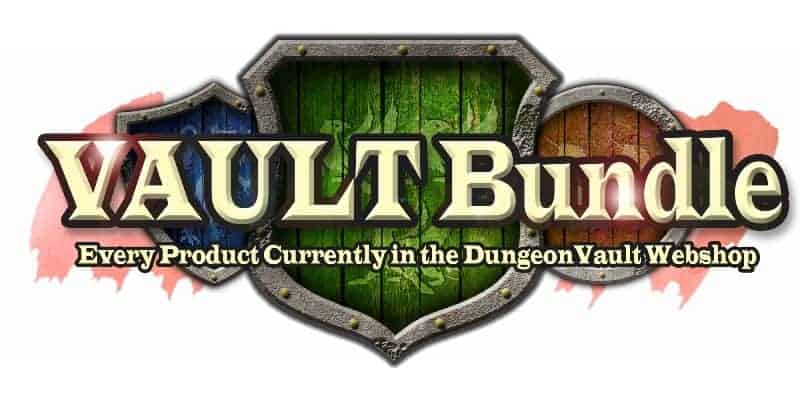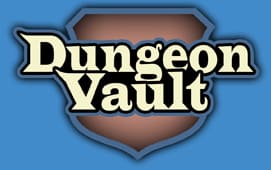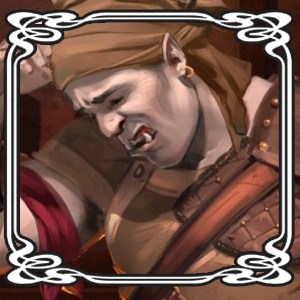
Bad D&D puzzles are unfortunately very common. And they are usually something the DM enjoys but the players do not. Still it’s fun reading about the terrible, dare I say merciless, ideas DMs come up with to torment their players. And you learn what not to do.
So let’s get into it.
8. Puzzles that don’t deliver
The countdown D&D puzzle is an example of a puzzle that promises a lot but doesn’t deliver. It’s such a classic that there’s even a video about it. (I recommend you watch the video before reading further.)
So why is this a BAD D&D puzzle? The players just spent an hour trying everything to solve a puzzle that, in the end, wasn’t even a puzzle. The narrator said that they all had a good laugh and I’m certainly not above admitting it can be fun to see your players squirm every now and then. But many players would probably feel they’ve just wasted an hour. In short, fun for the DM but it does not deliver for the players.
7. Puzzles that violate player trust
This next puzzle is very simple:
Written above a door in a dungeon are the words: “Yell friend, and enter.”
If players start yelling guards arrive and attack the intruders.
The idea is that the puzzle was placed there as a device to alarm guards to the players’ presence. This is a bad D&D puzzle for several reasons. Not only is it anticlimactic. It punishes the trust players put in the DM for buying into the make belief world. Players don’t question there being a weird puzzle because they trust the DM to provide a fantastical story. And their willing to forego their critical reasoning for the sake of the story and offer the DM some leeway. To use that very trust against them might come back to haunt the DM.
6. Puzzles that only challenge players, not their characters
Bad D&D puzzles only challenge the players and not their characters. An example is a chess puzzle where players must find the final move to checkmate their opponent. Now that’s not just my opinion. I actually did a bit of research to see what players enjoy. You can read about my chess puzzle experiment here.
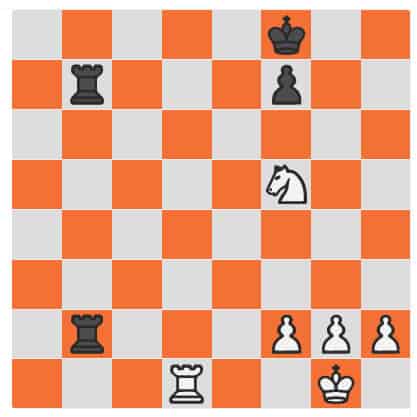
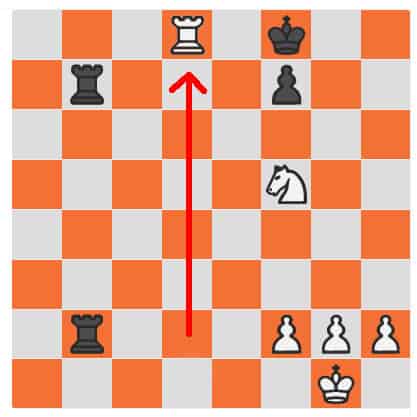
The reason D&D puzzles that don’t challenge the characters are bad, or at least suboptimal, is because in Dungeons and Dragons players want their stats to matter. If you’re playing a wizard with an intelligence score of 19 and you as a player aren’t great at solving puzzles, you still want your wizard to be good at it. Therefore, D&D puzzles should at least offer the option of rolling for either hints or successes that solve a part of the puzzle. Which brings us to the next bad piece of puzzle design; puzzles that only have one step to solving them.
5. Puzzles that have only one step to solving them
If your puzzle can only be solved in one step, than players either get it or they don’t. There’s no process of discovery. So if they do get it, you move on in about 3 seconds. And if they don’t, they are stuck for a long time. At some point a players will want their character to make a skill or intelligence check to solve the puzzle. And if they make the check the DM has to give away the entire answer. Which again, takes about 3 seconds. Not fun for the players or the DM. Of course, the previous chess puzzle is a perfect example of this flaw.
4. Puzzles that take too long
Puzzles should be a fun intermezzo that complements a variety of challenges. But if a puzzle takes too long, players will get bored with it. The average puzzle challenge should take about 5 to 15 minutes to solve, with maybe a 45 minute challenges at the end of a campaign IF players enjoyed the previous puzzles. But throwing a puzzle that takes an hour to solve at players that haven’t given any sign of enjoying such a challenge, is using puzzles in a bad way in my opinion.
As a rule of thumb: Just like monsters get progressively stronger, so should puzzles get progressively more elaborate (but not necessarily harder).
3. Puzzles that don’t belong in the world
There are really two types of bad puzzles in that belong in this category. First are puzzles that make no effort what so ever to become a part of the D&D world. An example would be sticking a sudoku to a door which only opens if the players solve it. Now there is nothing wrong with a sudoku. In fact, it is based on logic which works in any fantasy universe. In that regard it is perfect. But just presenting players with a print out of a sudoku takes them out of the fantasy world. That is a real missed opportunity, because puzzles are one of the few instances where you can create an immersive experience through handouts. Putting a bit of effort in fantasy artwork for your puzzles goes a long way. That doesn’t mean you need to be an artist. Just put a bit of effort in making your puzzle feel like a part of the fantasy world.
The second category of bad puzzles that don’t belong in the world are puzzles that rely on knowledge the players would know, but not the characters. For instance, a puzzle that relies on naming all the Kardashians breaks immersion because the characters have never heard of them.
2. Puzzles that aren’t cooperative
The next sin of bad puzzle design in D&D is puzzles that do not include all players. Now this tends to happen whether you as a DM want to or not. One players hogs all the puzzle pieces while the rest of the group starts checking their phone waiting for the whole thing to be over.
There are a couple of ways to counter this. First, make sure everyone can see the puzzle and can join in from where they are sitting. Puzzles that can be viewed from multiple directions help here. Next, you can give each player one or more puzzle pieces. Or you can give players turns. This really is a subject onto itself and I wrote a short article about encouraging teamwork if you’re interested.
But in any case, my advice would be to try to think of ways to stimulate cooperation when introducing a puzzle or some players will have a bad time. If doesn’t even have to be solving the puzzle. If one player doesn’t want to help solve the puzzle, you can still give them some task, such as holding open a heavy portcullis with multiple strength checks while the other players solve the puzzle. The important thing is to always include everyone at the table.
1. Puzzles that have ILOFs
The number one sin of bad puzzle design is including ILOFs in your puzzle. An ILOF is an Illogical Leap of Faith. It’s where players logically could not have known the answer to a puzzle, where a great many random answers would also be correct, or where the answer is simple too farfetched.
Unfortunately, ILOFs are also the hardest to find and get rid of as a puzzle designer. It’s where we tend to have a blind spot as DMs.

A real life example of a bad puzzle that has ILOFs is a keypad on a door where a code must be entered.
The answer to this puzzle was: 3769
Now, even after I have given you the correct answer you probably still have no idea how to solve the puzzle. That’s a sure sign a puzzle contains ILOFs. So I asked the DM of this puzzle to clarify there reasoning and here’s what he explained:
The buttons on the keypad are round, each representing the number pi. There are 12 buttons on the keypad so 12 x pi = 37.6991118431. The first four numbers are 3769.
Now let’s list the ILOFs:
- The characters could not have known the code consist of four numbers. Because that’s out of world knowledge.
- There is no logical reason for adding up the number pi. They might just as well have multiplied it.
- There are more circles on the image. Why not count those?
- There’s no hint that pi should be used. They might just as well calculated the mass of the lock or the weight.
In the DM’s mind these might all be very small logical steps. But in the players’ minds they are completely arbitrary steps in a sea of possibilities. So getting rid of your ILOFs helps you design a better puzzle like nothing else.
Building better D&D puzzles
I try to take these factors into account when designing puzzles, although it can be difficult to always avoid all of them, I do make an effort to try. If you want to learn more about my puzzles, check out the Vault Bundle. It has a ton of puzzles that have been specifically designed to work with Dungeons and Dragons or other roleplaying games.
